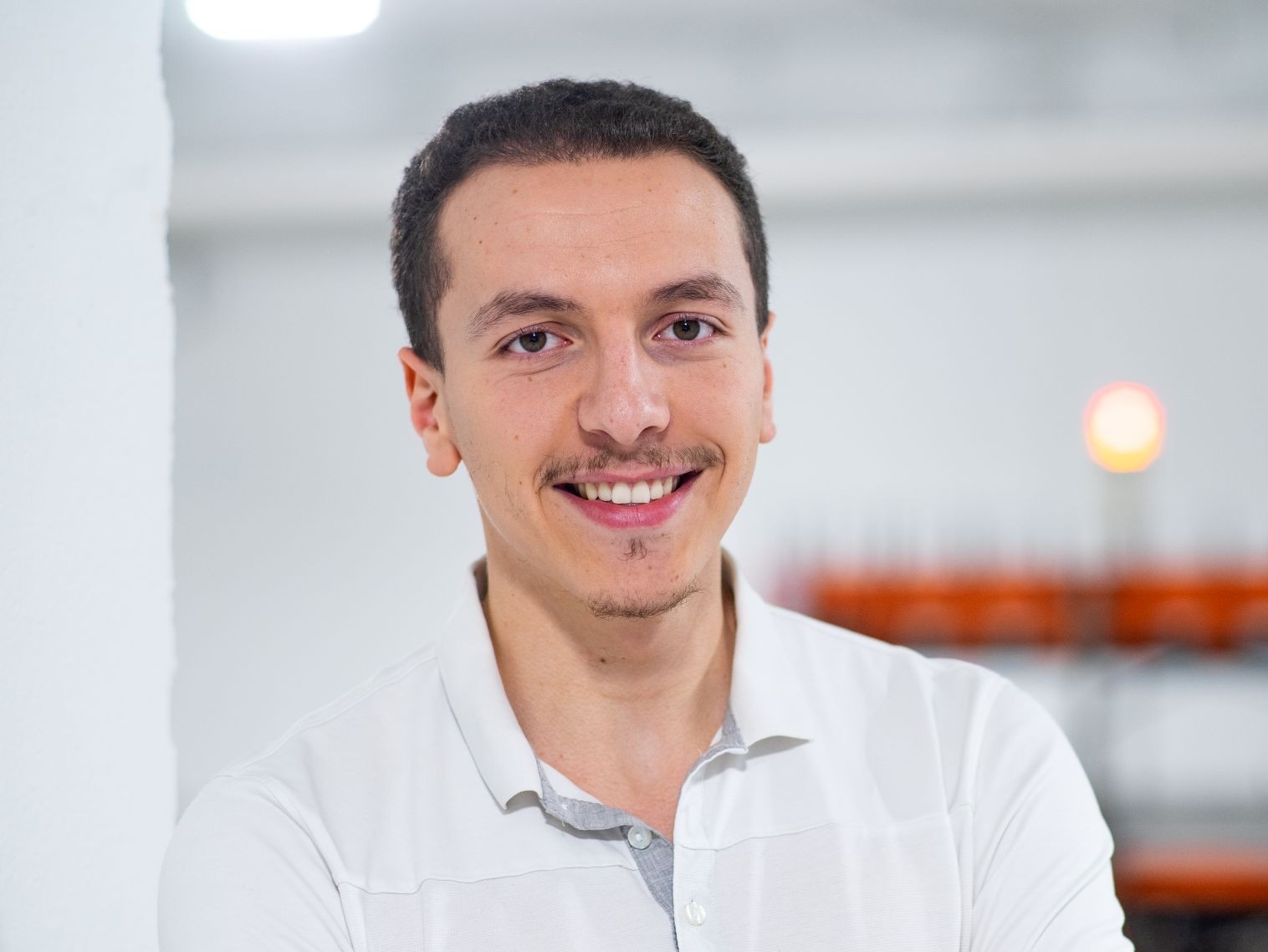From intern to CEO in 5 years: How Samy Benhamza is harnessing the sun
 “Most people think that by 2030 solar will be the main power source for all of our needs, and that’s a good thing,” says Samy Benhamza, BEng 20. | Photo credit: CAPSolar
“Most people think that by 2030 solar will be the main power source for all of our needs, and that’s a good thing,” says Samy Benhamza, BEng 20. | Photo credit: CAPSolar
Samy Benhamza, BEng 20, knew almost from the first day he arrived at Concordia that he wanted to start his own business after graduation.
The only question for the young mechanical engineer was what type of business it would be.
“Every year, it was, ‘Okay, what could I do? What could I do? What could I do?’” recalls Benhamza, now 27.
In 2019, right before his last year in the Department of Mechanical, Industrial and Aerospace Engineering at Concordia, an answer came from a burst of inspiration.
While completeing an internship at the Prevost division of Volvo Group in Sainte-Claire, Quebec, Benhamza had an idea for a solar panel accessory for an electric bus. His team liked it and went for it.
“It actually worked,” says Benhamza proudly.
He was hooked.
“I knew that as I finished my internship, I wanted to make solar panels for cars. I want to find a way to do it and make it make sense.”
Five years later, he and his 10-person team at CAPSolar are doing just that. Co-founded with fellow Concordian Hanssan Permalloo, BEng 20, the Montreal-based startup develops and builds custom solar panels that can be installed or integrated into a variety of electric vehicles (EVs), including bikes, cars, trucks and even boats.
As EV experts like Elon Musk have argued, it is impossible to fully power most EVs using solar.
And Benhamza agrees.
“But it is possible to complement battery charging,” says Benhamza. “So in North America, in general solar can give you an extra 20 to 35 kilometres a day of range on a vehicle like a Tesla Model 3.”
In March, the company launched the first flexible solar panel manufacturing facility in eastern Canada, in Ahuntsic-Cartierville.
Benhamza admits the path of the past five years hasn’t been easy, and the company is now at a critical point in its development. But he is convinced of the potential.
“Most people think that by 2030 solar will be the main power source for all of our needs, and that’s a good thing,” he says. “But the full potential of solar hasn’t been developed yet. And in order to get there, we need to put solar pretty much everywhere.”
‘There’s something there’
When Benhamza started reading about solar-powered EVs several years ago, the jury of scientific experts was out: some said it made sense, others said it was a pipe dream.
“And in general, that means there’s something there,” says Benhamza.
So, the summer his internship ended, he and Permalloo started working on the solar panel idea for their Capstone Engineering design project — building a solar module for the low-speed, street-worthy Daimler Chrysler 2005 Polaris GEM e4. The project reached the finals.
Access to opportunities like this was one reason why Benhamza wanted to go to Concordia, he says. His two siblings also studied at the Gina Cody School of Engineering and Computer Science — Maher, BEng 15, MEng 17, and Reda, BEng 19.
Now, that education is helping fuel a thriving startup. CAPSolar’s current clients include the City of Montreal, the Automotive Parts Manufacturer’s Association, Vision Marine Technologies, and one of the largest car manufacturers in the world (which CAPSolar can’t name yet).
‘Way more complex than we initially thought’
Since setting up the manufacturing line in March, CAPSolar has been focused on perfecting its processes and its panels, says Benhamza.
But it has been a challenge, he admits. “It’s been way more complex than we initially imagined and requires more capital than we thought.”
One major hurdle has been persuading clients to use solar in the relatively new EV market, he says.
“For some, they aren’t even sure they want to use batteries, and now I’m selling something to make batteries better. So it can be a bit hard to convince people.”
But the biggest challenge is actually aesthetic, he says.
“Putting a regular solar panel on a car or truck is too ugly to be accepted. So, it can be really tough to play with aesthetics and performance while keeping the cost low.”
Despite these roadblocks, Benhamza is bullish on the future of CAPSolar and solar-powered vehicles in general.
“Putting solar on any kind of moving object is just going to be part of the energy mix,” he says. “It’s not enough to just put it on farms and houses and buildings — it has to be everywhere.”

